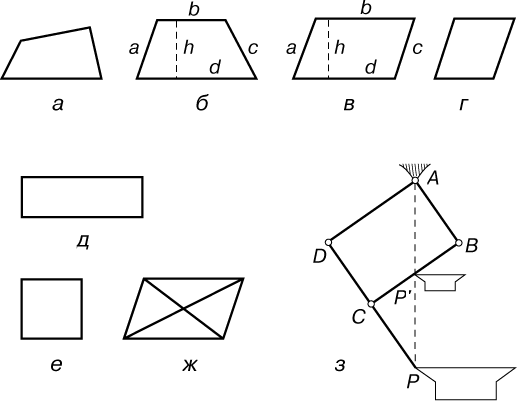Instruction
1
A diagonal of a quadrilateral is the segment connecting its opposite corners. Have a quadrilateral has two diagonals that intersect at one point. Diagonals are sometimes equalas rectangle and square, and sometimes of different lengths, as, for example, of a trapezoid. A method of finding the diagonal depends on the figure.Draw a rectangle with sides a and b and the two diagonals d1 and d2. From the properties of the rectangle it is known that its diagonals are equal to each other, intersect in one point and divide it in half. If you know two sides of a rectangle, its diagonals look as follows: d1=√a^2+b^2=d2.A special case of the rectangle is a square, whose diagonal is a√2. In addition, the diagonal can be found knowing the area of a square. It is equal to: S = d^2/2.Hence the length of the diagonal calculate from the formula: d = √2S.
2
Some other way to solve a problem when given a rectangle and a parallelogram. This figure, unlike the rectangle or square are equal, not all angles, but just the opposite. If the condition is present, the task of the parallelogram with sides a and b and a given angle between them, as shown in the figure to step, diagonal way, using the theorem of cosines: d^2 = a^2+b^2-2ab*cosα.A parallelogram with equal sides is called rhombus. If a task needs to find the diagonal of this figure, you will need the values of its second diagonal and square since the diagonals of this figure are unequal. The formula for the area of a rhombus as follows: S = d1*d2/2.Hence, d2 is equal to twice the area of the figure divided by d1: d2 = 2S/d1.
3
When calculating area of a trapezoid will have to use the trigonometric function sine. If this figure is ravnovesnoi, knowing her first diagonal d1 and the angle between two diagonals of AOD, as shown in the figure to step, locate the second according to the following formula: d2 = 2S/d1*sinφ. In this case we consider the trapezium ABCD.There is also a rectangular trapezium, the diagonal of which is to find a little bit easier. Knowing the length of the lateral side of the trapezium equal to its height, and the bottom base, find the diagonalusing the usual Pythagorean theorem. Namely fold the squares of these quantities, and then from the result, extract the square root.
